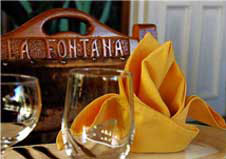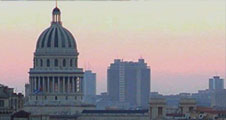Our popular music in the 20th Century (3rd part and final)
By: Senén Suárez Hernández | Source: CUBARTE | 16 de October 2009If the years that preceeded the 1950’s decade of the 20th Century were promising and made relevant contributions to Cuban Music, the nineteen-fifties were also ambicious, musically speaking.
At the very beginning, we had the mambos created in our country and produced in Mexico, by Damaso Perez Prado (Matanzas, 1917- Mexico, 1989). In Cuba it was not possible to develop this rhythm, due to the lack of recording studios that could carry out this task.
These years, also saw the rising of a voice with an original personality and an excellent quality to be remembered for many years. We´re talking about Bartolome Maximiliano More (Santa Isabel de Las Lajas, 1919- Havana, 1963).
We need to say that Bartolome became, years later, Benny More, thanks to the beloved Rafael Cueto, member of the “Miguel Matamoros” trio, since Bartolo, his original nickname was not so welcomed in Mexico.
However, on this occasion, we´re not going to refer to the much dealt case of Benny More as an interpreter, but the the Benny More as an artist and a musical composer.
It may be that this exceptional musician, originally from Santa Isabel de Las Lajas, would be a famous composer with a long list of musical pieces, and that his music went beyond the time with an undeniable quality and value; because, in spite of his early death at 43, we´re dealing with a composer having more than thirty pieces recorded in different disc companies all-round-the-world.
This can be proved by his hard work in different record companies and great orchestras among which were: “Rafael de Paz”, “Mariano Mercerón”, “Dámaso Pérez Prado” orchestra, “Arturo Núñez”, “Lalo Montané”, among other musical groups settled in Mexico City. Being in Cuba, his recordings with the orchestras “Ernesto Duarte Brito” and “Benny More´s Giant Band” also became a legend.
That´s why, we´re going to mention some of his works, which were professionally recorded, as well as some of his unknown recordings, disregarding the unpublished that could be saved.
Now, let us remember some of the Great of the Rhythm (Barbaro del Ritmo) pieces:
Mangolele,
Dolor carabalí,
Guajiro,
Locas por el mambo,
Mamboletas,
Desdichado,
Rumberos de ayer,
Ensalada de mambo,
Bonito y sabroso,
El brujo de Trinidad,
Amor sin fe,
Buena bonita y barata,
Devuelve el coco,
Ahora soy tan felíz,
Mi saoco,
De la rumba al cha cha chá,
Santa Isabel de las Lajas,
Cienfuegos,
Dolor y perdón,
Que bueno baila usted,
Mi amor fugaz,
El conde negro,
Se te cayó el tabaco,
Caricias cubanas,
Perdí la fe,
No te atrevas,
Amor fingido.
All these works, all recorded and famous, made of Benny More a famous composer, an exceptional quality of his exemplary life, of which it has never been written.
By that time, the radio station “Radio Progreso” won popularity with its selected musical programs, which kept a big national and international audience. Its most listened to spaces were three live programs that were broadcast during the evenings.
This program kept a stable musical group which was “La Sonora Matancera”, with its singers and invited artists like: Nelson Pinedo, Celia Cruz, Carlos Argentino, Leo Marini, Daniel Santos, Alberto Beltrán, Laito Sureda, Rodolfo Hoyos, among others.
From 1953 on, the “America” orchestra launched, with Ninon Mondejar and Enrique Jorrin, a new rhythm which they named Cha-Cha-Cha, which was sung and danced by almost everybody. This rhythm was a craze at the beginning of the nineteen-sixties.
1952, saw the opening of the new architectural structure of an old cabaret called “Tropicana”, which started to operate in 1939 under the direction of Brazilian-Portuguese Victor de Correa.
This cabaret began to be famous in 1948, with the arrival of the “Gran Casino”spanish orchestra, which changed its name, one week later after it was created, to “Los Chavales de Espana”.
By this time “Tropicana” entered into a new age of an always full night club.
We need to say that during this time the cabaret changed of owner and the new structure started to be done, which consisted in creating two cabarets in one: “Bajo las Estrellas” -Under the Starts- and “Arcos de Cristal” -Crystal´s Arches.
The first one was an open air facility and the second was to be used only if there was bad weather.
Some times both of them worked at the same time, and I think it was a monumental architectural work, designed by Max Borges, who was supported by the magnificent flora that surrounds this place.
“Tropicana” and its beautiful flora should keep its value along the time, as well as our urivalled Cuban popular music, which this cabaret still keeps during the performances.
The cabaret was awarded once its monumental constructions were over.
During this period we´ve been talking about, some well-known musical groups were created, like, for example:
“América” orchestra, conducted by Ninón Mondéjar & Enrique Jorrín,
“Pancho el Bravo” orchestra,
“Senén Suárez” Ensemble,
“Moncada” Group,
“NG la Banda” orchestra,
“Los Van Van” orchestra, directed by Juan Formell,
“Sublime” orchestra,
“Adalberto Álvarez y su Son” orchestra,
“Neno González” orchestra,
“Charanga Habanera”
“Melodías del 40” orchestra,
“The CMQ Radio Station Orchestra”, conducted by Alfredo Brito, who accompanied: Pepe Reyes, Reinaldo Enrique, Miguel D´Gonzalo, René Cabel and others. Pablo Milanés recorded three CDs of Cuba trova under the titles “Año I”, “Años II” and “Años III”. He was accompanied by Octavio Sánchez (a.k.a. Cotán) and Luís Peña (a.k.a. El Alvino),
“Siglo XX” orchestra,
“Riverside” orchestra with Tito Gómez,
“Charanga de Ruvalcaba” orchestra,
The musical group “Clásicos del son,
“Félix Chapottín” Ensemble with Miguelito Cuní,
“Roberto Faz” Ensemble,
“Son 14” Ensemble,
“Sonora Matancera” with Bienvenido Granda, Celia Cruz, Laito Sureda and Celio González,
Pacho Alonso y los Bocucos,
Julio Cueva accompanied by his singer Manuel Licea (a.k.a. Puntillita),
Original de Manzanillo,
“Anacaona” orchestra F., conducted by Concepción Castro, voice Moraima Secada,
“Encanto” orchestra F., conducted by Guillermina Follo,
“Hermanas Álvarez” orchestra F., etc...
Edesio Alejandro and his group recorded so well “El reloj de Pastora” sung by Adriano Rodríguez,
“Manguaré” musical group,
“Casino” Ensemble with Roberto Espí and other singers,
“Casablanca” Ensemble,
“Jóvenes del Cayo” Ensemble with Alfonsín Quintana,
“Sierra Maestra” musical group,
“Estrellas de Chocolate” Ensemble,
“Bolero” Ensemble conducted by Enrique Pérez,
“Rumbavana” Ensemble with the singers Raúl Planas, Orestes Macías and Fernando González,
“Estrellas Cubanas” orchestra,
“Gloria Matancera” Ensemble, voice Roberto Sánchez, Cheo Junco etc,
“Hermanos Avilés” orchestra from Holguín,
“Chepín Choven” orquestra,
“Mariano Mercaron las dos de Santiago de Cuba” orchestra,
“Ernesto Duartes Brito” orchestra, which accompanied relevant musicians such as: Benny Moré, Rolo Martínez, Rolando Laserie, Celeste Mendoza and Tata Ramos,
“Paulina Álvarez” orchestra,
“ Irakere” conducted by Chucho Valdés,
“Enrique Jorrín” orchestra,
“Los Latinos” orchestra, voice Ricardito,
We could also mention some musical dance pieces which were famous or popular, such as:
- Los Tamalitos de Olga, by José Antonio Fajardo
- El bodeguero, by Richard Egües
- Rico Vacilón, by Rosendo Ruiz Quevedo
- Píntate los labios María, by Ramón Castro
- Bemba Colará, by José Claro Fumero
- Los Aretes de la Luna, by José Dolores Quiñónez
- Mil Congojas, by Juan Pablo Miranda
- Si te contara, by Félix Reina
- Porque tú me acostumbraste, by Frank Domínguez
- Dolor y Perdón, by Benny Moré
- Bonito y Sabroso, by Benny Moré
- Santa Isabel de las Lajas, by Benny Moré
- mong those authours who went beyond their time and are still being promoted by the radio are:
- Miguel Matamoros, (S de C. 1894-1971)
- Eliseo Grenet (H. 1893-1950)
- Sindo Garay (S de C.1867-H.1968)
- Manuel Corona (Caib,1880--H 1950)
- Moisés Simons (H--1890—Madrid 1945)
- Abelardito Valdés (H-1911—1958)
- Luis Marquetti (Alquízar-1901--1991)
- Juan Arrondo
- Bola de nieve, Ignacio Villa (Gua..H-1911 Méx 1971)
- José Antonio Méndez (H 1927--1989)
- César Portillo de la Luz (H, 1922--)
- Oscar Hernández, (H, 1891—1967).
Some of the musical pieces created by the aforementioned composers were not conceived to be danced, but many musical groups arranged them so people could dance them.
As a complement of these three notes about some reminiscences and experiences regarding Cuban popular music, we should not overlook the “Lecuona Cuban Boys” orchestra, which, according to what the music specialist, Manuel Villar, refers, the outstanding Cuban musician, Ernesto Lecuona (Guanabacoa, 1896- Canary Islands, 1963), requested in the year 1932, while staying in Madrid, Spain, the service of the orchestra of “Teatro Encanto”, conducted by Armando Orefiche, located in Neptuno and Consulado, City of Havana, to make a six-month tour to the Spanish Republic.
At the very beginning, the orchestra had the maestro´s name, having a repertoire mostly based on Cuban popular music, which, among others, included “El Manicero”, “Siboney”, “La Cachimba de San Juan”, “Carabali”, “La Conga de Jaruco”, etc. With his usual wisdom, he made the orchestra become a great show, either by its musical quality, as well as by the way the musicians performed.
In 1933 Lecuona got sick and the group took the name of “Lecuona Cuban Boys”. It was conducted by Armando Orefiche, who kept the same presentation line.
In 1943, the orchestra returned to Cuba and carried out some performances before leaving, later on, for South America, where they made a big tour all along this part of the American Continent.
Under the name of “Havana Cuban Boys”, Orefiche came back to Europe to continue his ethernal prilgrimage all along the Continent. They became so popular that other musicians took their style and way of performing. That was the case of the “Tokio Cuban Boys” and “Billo Caracas Boys”, and it was also said that Javier Cugat imitated their work line, as well as “Los Chavales de Espana.”
Armando Orefiche was born in Havana, on June 5, 1911, and died in Palmas, Canary Islands, on November 24, 2000. Being a composer, piano man and orchestra conductor, he conceived a lot of musical works, among the most outstanding were: “Messie Julian”, “Mayari”, “Corazon para que” and “Rumba Azul.”. The latter one was recently recorded by the Brazilian singer and composer, Caetano Veloso. Armando´s ashes were spread, according to his willingness, in front of this island where he used to live.
Another novel situation for our popular music was the rhythm Mozambique, which developed during the nineteen-sixties. It was conceived by Pablo Izquierdo, a.k.a. “Pello, El Afrocan”. He created a group that played very popular pieces like “Maria Caracoles”, by Leiva and Pello; “Arrimate paca”, by Juanito Marquez; “Ritmo Mozambique”, by Pedro Izquierdo”, among others.
A current we cannot forget to mention is the feeling, based on romantic music, having a contemporary harmonization which, in most of the cases, was like a bolt on for the hearts in love.
From this popular musical trend arouse outstanding composers and works, all of which fully permeated the harsh of our popular music.
Another important event was the creation of the New Trova movement which, supported by ICAIC (the Cuban Film and Arts Industry) and by maestro, Leo Brower, arouse as something spontaneous but necessary for the peoples´ struggle that finishes with a bloody and horrible tyranny.
From this movement, were born genuine figures like Silvio Rodriguez with songs like: “La Era esta pariendo un Corazon”, “Unicornio Azul”; Pablo Milanes and works like: “Yo me Quedo” and “Soy de esta Isla”; Noel Nicola with his “Cuba Vaaa”, and many others who followed the same line. This way, it began a new musical age that praised a Revolution that was a result of a pure courage.
The presence of Benny More, popularly known as “El Barbaro del Ritmo” and his big band. He made big contributions to the Cuban dance music of the XXth Century. He has lived and will live in all Cuban hearts for many years; at least, that´s the way how the showman, Roberto (a.k.a. Bobby) Carcasses, a trumpet player, percussionist, pianist, bass player and musical composer with a nice voice described him in his work “A Benny More” -To the Memory of Benny More.
Another relevant event within the Cuban popular music, which took place almost at the end of the XXth Century, was the creation of “Buena Vista Social Club” group, a brilliant idea conceived by US guitar player, Ry Cooder who, under the help of the excellent musician, Juan Demarco Gonzalez, created a group of good retired musicians, such as: Ruben Gonzalez, pianist; Orlando Cachaito Lopez, Bass Guitar; Ibrahim Ferrer, E. Ochoa and Francisco Repilado, voices; Guajiro Miraval, trumpeter; Amadito Valdes, drummer and pailas; Aguaje, at the trombons; Juan Demarco, tres, an other musicians.
With these musicians, Ry Cooder took the Cuban popular music to the maximum popularity at a world wide scale, also achieving, due to the high quality of the project, that the group was nominated to receive the 1996´s Granmy Latino Award.
And to finish with the approach to Cuban dance popular music, whose our main purpose is to recall some memories of a century of music and interpreters, we have preferably left for the end a musical group which represents, for the author of this article, and for many other persons, something worth to be mentioned over and over again...We´re talking bout the “Aragon” orchestra (image), highlyvalued and dignified by the force of its quality, patience and an ironclad discipline, and it´s almost the only one of those mentioned in this series that is still performing CONGRATULATIONS!, I only wish they keep on representing us for many years.
Acknowledgements:
Manuel Villar Fernnadez, Music specialist and Researcher
Jose Galiño, Music Specilist and Historian
BA. Belinda de la Caridad Senen Pesi
BA. Roberto Payeras Garcia
Translation: Roxana Marquez Herrera (Cubarte)























